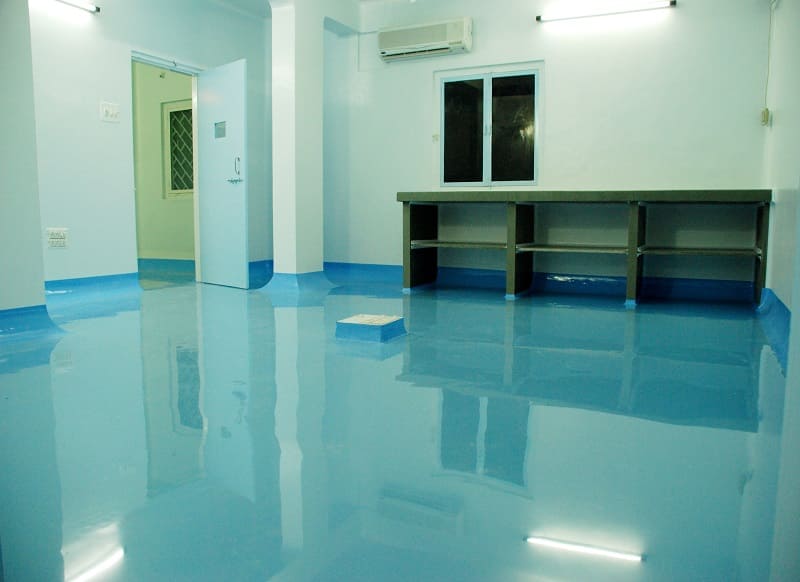
PU Concrete Flooring: A Durable and Versatile Solution for Your Space
In the realm of flooring solutions, PU concrete flooring stands out as a compelling option for both residential and commercial applications. This innovative material blends the inherent strength of concrete with the resilience and aesthetics of polyurethane, resulting in a high-performance surface that caters to a multitude of needs. However, before diving into the world of PU concrete flooring, it’s crucial to understand its advantages and disadvantages to make an informed decision for your project.
Advantages of PU Concrete Flooring
Uneparalleled Durability: PU concrete flooring boasts exceptional toughness. The polyurethane coating safeguards the underlying concrete from scratches, abrasions, and heavy impact, making it ideal for high-traffic areas like warehouses, garages, and even showrooms. This translates to a longer lifespan for your flooring, minimizing the need for frequent replacements and repairs.
Chemical Resistance: A significant advantage of PU concrete flooring is its remarkable resistance to a wide range of chemicals. This characteristic makes it a perfect choice for industries that utilize harsh chemicals, such as manufacturing plants, laboratories, and food processing facilities. Spills and splashes won’t readily damage the surface, ensuring a safe and hygienic environment.
Easy Maintenance: Maintaining PU concrete flooring is a breeze. The smooth, seamless surface prevents dirt and debris from accumulating, simplifying the cleaning process. Regular sweeping and mopping with a PH-neutral cleaner are sufficient to keep the floor looking pristine. This translates to reduced cleaning costs and improved efficiency, especially in expansive spaces.
Aesthetic Appeal: PU concrete flooring goes beyond mere functionality. It offers a wide array of design possibilities. The polyurethane coating can be formulated in a vast spectrum of colors and finishes, allowing for customization to complement any décor. Additionally, decorative chips or patterns can be integrated into the surface, creating a visually stunning and unique flooring solution.
Improved Comfort and Safety: PU concrete flooring offers a slightly softer feel underfoot compared to traditional polished concrete. This subtle difference enhances comfort, particularly in areas where people stand for extended periods. Furthermore, the polyurethane coating provides excellent slip resistance, minimizing the risk of accidents, especially in environments prone to spills or moisture.
Thermal Shock Resistance: PU concrete flooring exhibits impressive thermal shock resistance. This characteristic ensures that the surface won’t crack or delaminate due to rapid temperature fluctuations. This makes it suitable for applications exposed to extreme temperatures, such as industrial kitchens or facilities with significant temperature variations.
Applications of PU Concrete Flooring
PU concrete flooring’s versatility extends to a wide range of applications. Here are some prime examples:
Industrial Settings: Warehouses, manufacturing plants, laboratories, and food processing facilities benefit immensely from PU concrete flooring’s durability, chemical resistance, and ease of maintenance.
Commercial Spaces: Showrooms, retail stores, and restaurants can leverage the aesthetic appeal, durability, and easy cleaning properties of PU concrete flooring to create an inviting and functional environment.
Residential Applications: PU concrete flooring can add a touch of modern elegance to basements, garages, and even living areas. The variety of colors and finishes allows for customization to suit individual preferences.
Disadvantages of PU Concrete Flooring
While PU concrete flooring boasts numerous advantages, it’s essential to consider some potential drawbacks:
Initial Cost: Compared to traditional concrete flooring, PU concrete flooring can involve a higher upfront investment. The cost of materials and skilled labor contributes to this factor. However, the long-term durability and reduced maintenance requirements can offset the initial cost over time.
Skilled Installation: The successful installation of PU concrete flooring necessitates the expertise of trained professionals. Improper application can compromise the performance and aesthetics of the finished product. For optimal results in Pune, India, consider contacting Hi-Crete Decorative Systems Pvt. Ltd. (https://www.indiamart.com/hicretedecorativesystems/profile.html), a company renowned for its expertise in PU concrete flooring installations.
Susceptibility to UV Rays: Standard PU concrete flooring formulations may exhibit some degree of sensitivity to ultraviolet (UV) rays. This can lead to slight discoloration over time, particularly in areas with prolonged exposure to direct sunlight. For such applications, opting for a UV-resistant PU concrete flooring variant is recommended.
Conclusion
PU concrete flooring presents a compelling option for those seeking a durable, versatile, and aesthetically pleasing flooring solution. By understanding its advantages and disadvantages, you can make an informed decision for your specific needs. If you’re considering PU concrete flooring in Pune, India, don’t hesitate to contact Hi-Crete Decorative Systems Pvt. Ltd. (https://www.indiamart.com/hicretedecorativesystems/profile.html), a trusted service provider with a proven track record of excellence. Their team of experts can guide you through the selection process, recommend the most suitable PU concrete flooring option for your project, and ensure a flawless installation.

